We wrote a pair of Special Reports (report one, report two) on the topic of small- and mid-sized company stocks in 2022 and thought a follow-up with additional number crunching was in order. The Cliffs Notes version of the preceding reports is that Small Cap stocks and Mid Cap stocks are underrepresented in investor portfolios relative to companies of larger size. Significant upside potential and diversification benefits await those that are willing to sort the wheat from the chaff, as they are likely to find attractive opportunities in this specific corner of the market.
As a single reason to own Small Cap stocks, the long-term return series in Figure 1 is compelling, particularly when the stocks are of the Value variety that we have consistently preferred in the 46 years and counting that we’ve published The Prudent Speculator newsletter and managed assets. Not wanting to lead investors to Small Caps based on a single item (though it is a good one), this report offers additional reasons to like Small Cap stocks, including longer-term revenue and earnings growth trends, dividend growth and income diversification by geography.
We also note that the performance gap between Small Cap Value and Large Cap stocks has widened over the past six-plus years and there are potential diversification benefits that stem from venturing into stocks of smaller companies, versus the Large and Mega Cap names that tend to dominate many well-followed indexes.
Historical Evidence for Small Cap Stocks
We continue to find value in all market-cap strata, but smaller-cap stocks with reasonable price metrics and generous dividend yields have been largely left behind in recent years. That’s an anomaly for many reasons, especially considering the terrific long-term performance for Small Value stocks below. Some of our more-recent newsletter picks being of the Small Cap variety and we launched a Small-Mid Dividend Value strategy in 2015 to focus on this area of the market.

Revenue and Earnings Growth for Small Cap Stocks
Large Cap stocks get a lot of fanfare. Apple’s market capitalization is nearing $3 trillion. The company had $394 billion of revenue in 2022 and net income (profit) of $99.8 billion. The profit figure is larger than the entire market value for all but 79 companies in the Russell 3000 index. Such figures turn heads and garner grand headlines, but there is an entire subset of investable stocks that get far less attention but are potentially more valuable in a diversified portfolio. Figures 2 and 3 show Small Cap stocks have grown their sales and earnings at a faster clip than Large Cap stocks, at least since Russell started publishing aggregate index-level data in 1995. Admittedly, Large Caps have tended to be more profitable, which is reflected in the narrower gap between the indexes on the earnings chart (Figure 5) compared with the sales chart (Figure 4). Still, investors looking for corporate growth at reasonable valuations should take a hard look at Small Cap stocks, though parsing through the opportunity set to separate the wheat from the chaff will take more effort than sorting through larger stocks.
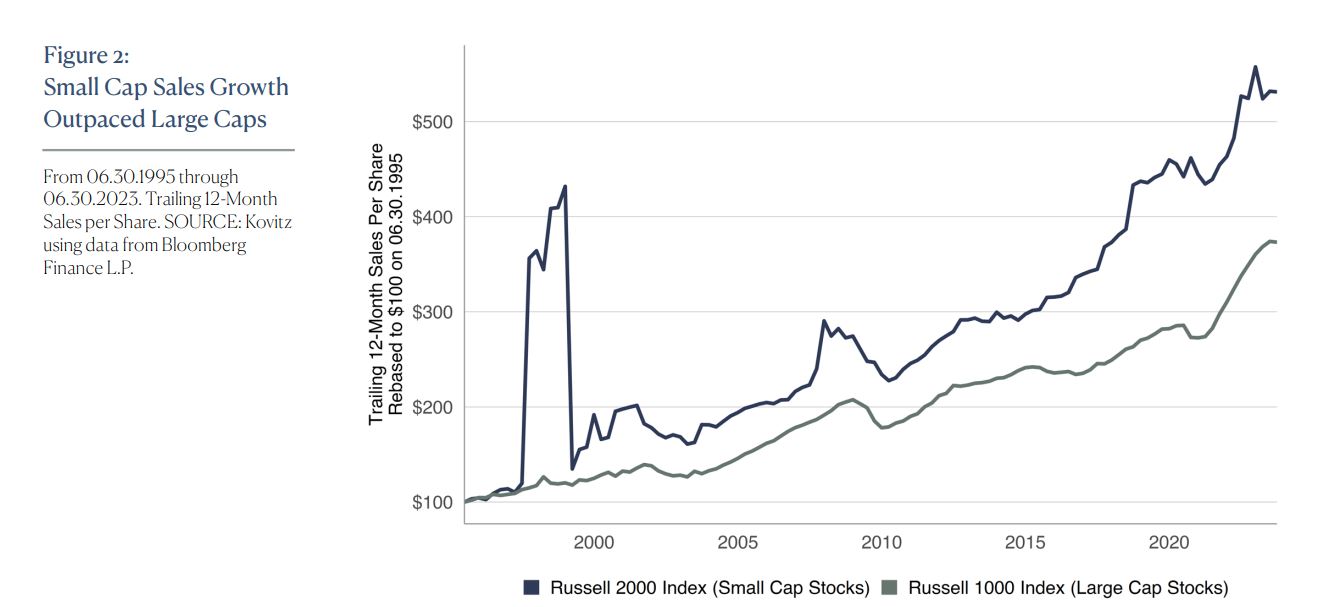
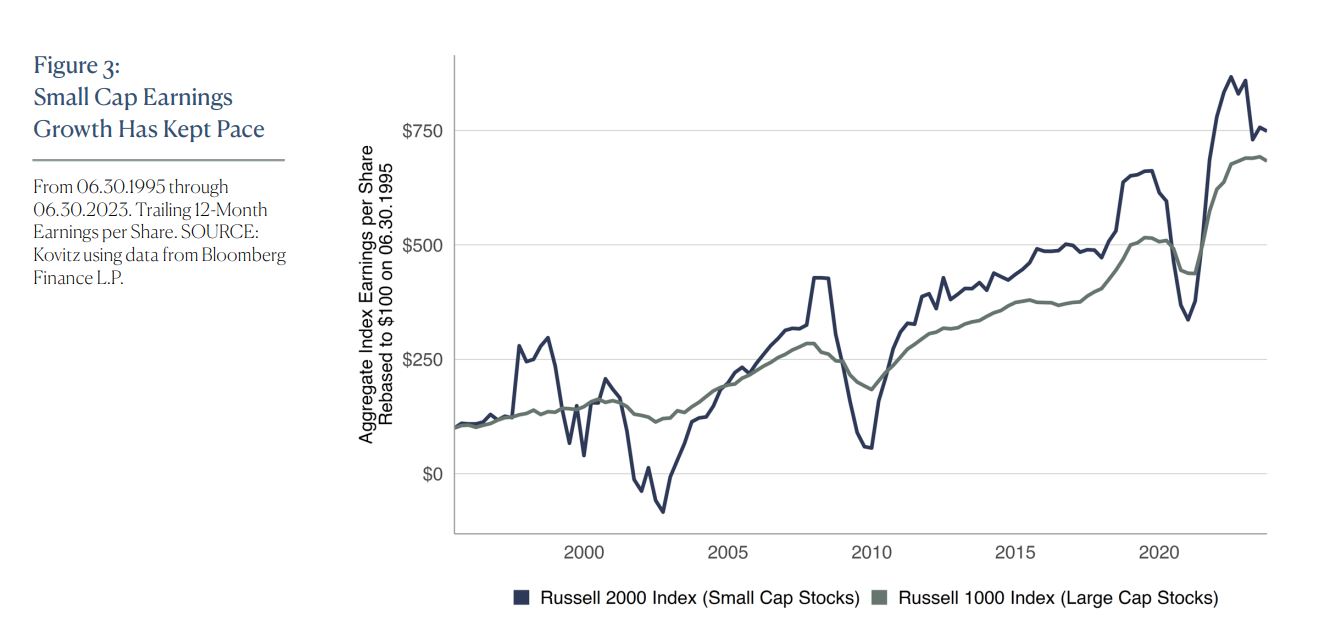
Dividend Growth for Small Cap Stocks
Larger companies tend to be given credit for their business’ maturity, allowing them to build up balance sheet cash and pay dividends to investors. Smaller companies are not necessarily knocked for their dividend payment programs or strong balance sheets, but investors often jump to conclusions about corporate stability by looking at a company’s size. In Figures 4 and 5, we crunched numbers for nearly 2,500 dividend-paying companies between 2009 and 2022 and found that dividend hikes in Small Cap and Micro Cap stocks outpaced Large Cap and Giant Cap hikes by approximately a factor of two, indicating that smaller companies are a perfectly worthwhile place to search for yield growers. The theme carries over to the broad index level. The yield for the Small Caps is 2.9% (Russell 2000 index), 0.9% higher than that of the Large Caps (Russell 1000 index). We also note the broad indexes do not target dividend-payers specifically. As of September 30, 67% of Large Cap constituents and 39% of Small Cap constituents paid a dividend over the past year.
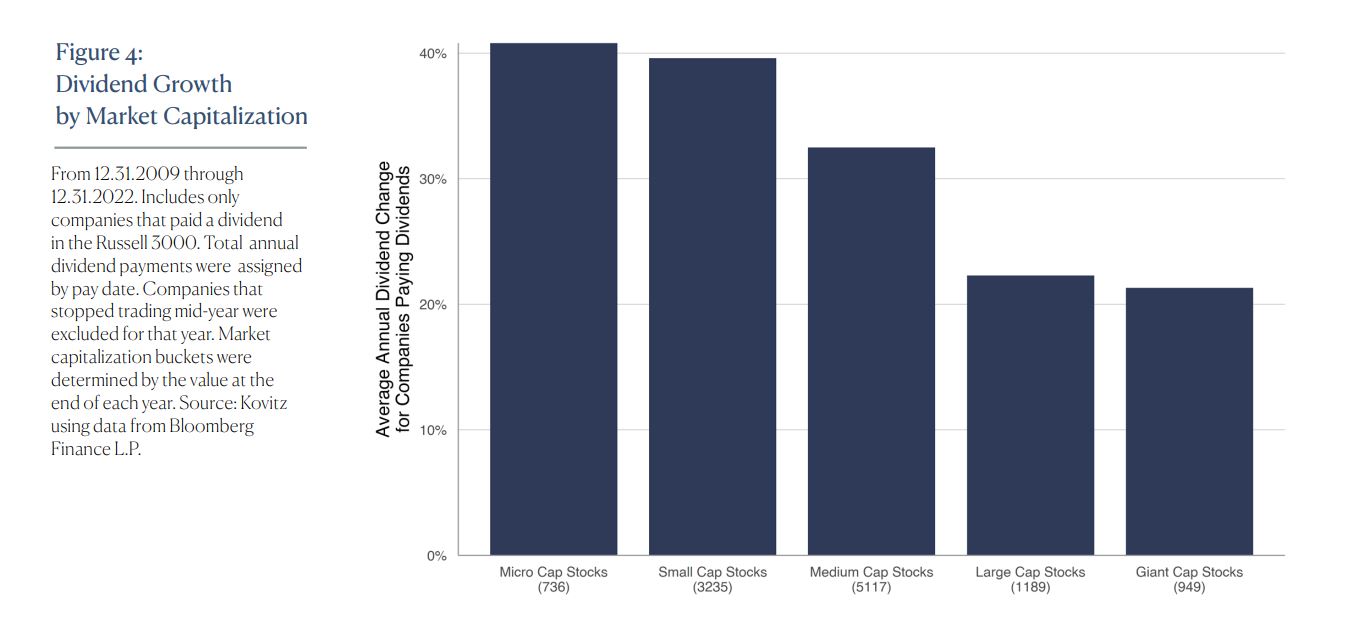
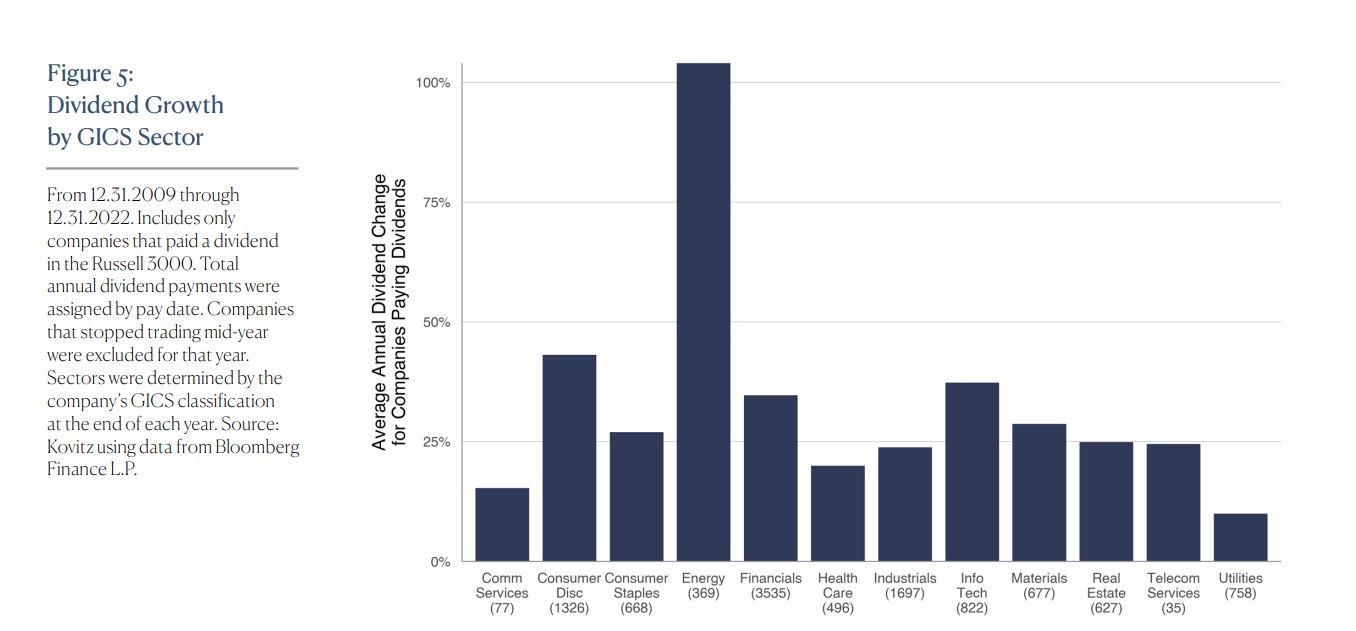
Domestic Focus
A strong U.S. dollar has been cutting into revenue and profitability figures for larger U.S.-based companies as the value of sales and earnings made in euros, pounds and other currencies are not worth as much after translations back into greenbacks. With persistent inflation also a headwind in many global markets and corporate profit margins for many multinational companies under pressure, the inclusion of exposure to U.S.-centric companies would seem to be of particular interest to investors.
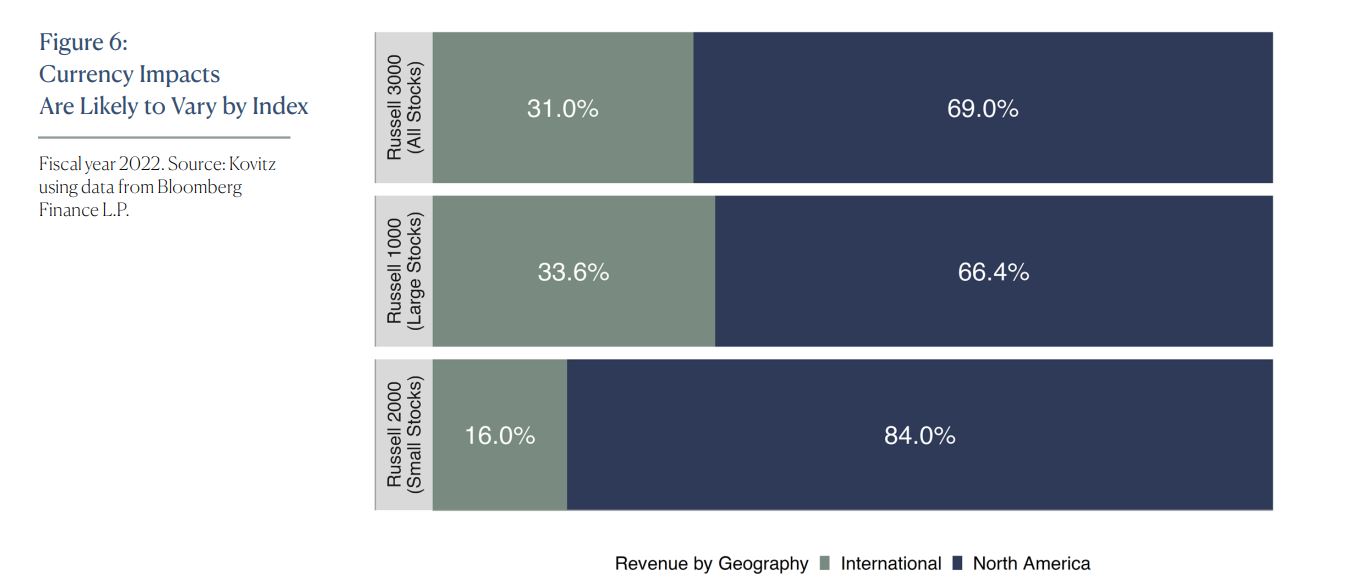
Recent History – Small vs. Large Returns for Small Cap Stocks
Pivoting to the Value version of the Russell 2000 index, investors have seen the performance gap between Small Cap Russell 2000 Value index (with market caps between $31 million and $7.9 billion on September 30) and the Large Cap S&P 500 index widen over the past six-plus years. The tide started to turn in Q4 2020, but there is a long way to go just to even up the game, much less return Small Cap Value to its leadership position.
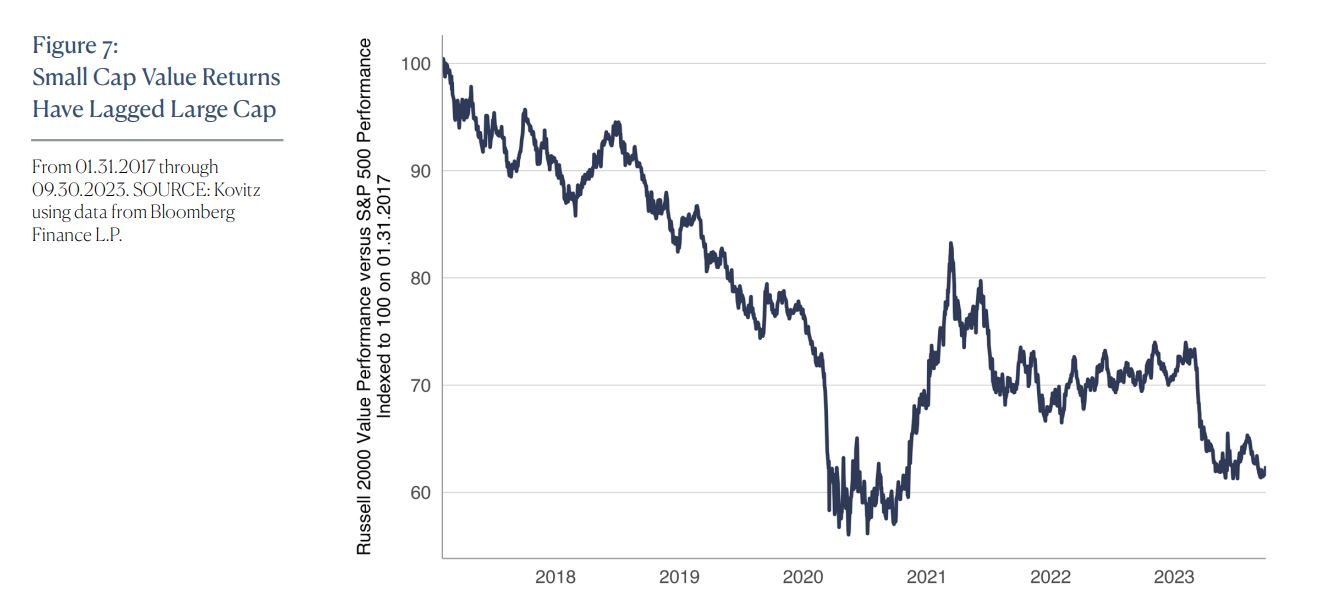
Differentiated Exposure
Exposure overlap can be problematic for investors and often goes unnoticed. Diversification, often referred to as the only free lunch in investing, refers to the practice of spreading out investments across multiple assets, such that the bumps along the path to investment success are smoothed out. We have long found the diversification juice is worth the squeeze and we can see why an investor might consider themselves to be more diversified holding both a S&P 500 ETF and a Russell 1000 ETF, rather than picking one. After all, they are different vehicles covering different indexes. However, Figure 8 shows the sector-level exposures are effectively the same. An investor would find a much larger diversification benefit holding an S&P 500 ETF plus a Russell 2000 or Russell 2000 Value ETF because of the reduction in overlap. The additional diversification, in conjunction with fundamental and total return benefits, leads us to believe that Small Caps serve as an attractive slice of an investor’s overall allocation.
Exposure overlap can be problematic for investors and often goes unnoticed. Diversification, often referred to as the only free lunch in investing, refers to the practice of spreading out investments across multiple assets, such that the bumps along the path to investment success are smoothed out. We have long found the diversification juice is worth the squeeze and we can see why an investor might consider themselves to be more diversified holding both a S&P 500 ETF and a Russell 1000 ETF, rather than picking one. After all, they are different vehicles covering different indexes. However, Figure 8 shows the sector-level exposures are effectively the same. An investor would find a much larger diversification benefit holding an S&P 500 ETF plus a Russell 2000 or Russell 2000 Value ETF because of the reduction in overlap. The additional diversification, in conjunction with fundamental and total return benefits, leads us to believe that Small Caps serve as an attractive slice of an investor’s overall allocation.
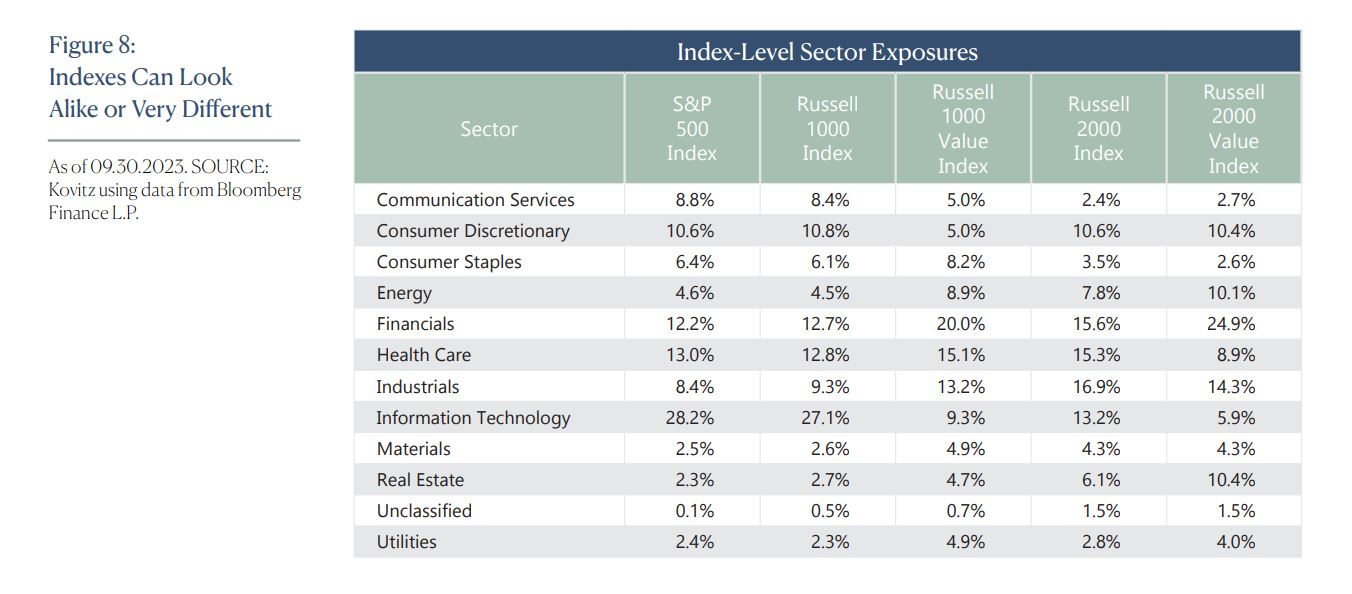
Small Cap Stocks Deserve A Spot in Your Portfolio
We think there’s a lot to like about Small Cap stocks, especially those that reside in the Value camp and pay dividends. While the preceding analysis uses broad indexes to cast the widest possible net, we do sleep better at night with the knowledge that the metrics on our managed account portfolios generally are far less expensive than those of the major market averages and are even priced more favorably than nearly all the Value indexes. The Small-Mid Dividend Value (SMID) strategy’s forward P/E is 10.5x, compared to the 20.1x figure for its Russell 2000 Value benchmark and the 19.8x multiple for the S&P 500. What’s more, SMID’s estimated dividend yield is 3.1%, compared with the benchmark’s 2.9% yield and the S&P 500’s 1.6% figure.
Efforts to augment our comprehensive wealth management services frequently turn up valuable investment opportunities for our clients and future clients. The Small-Mid Dividend Value strategy is a product of such research, and it has been a live portfolio for nearly a decade, endeavoring to offer the benefits we’ve highlighted in this report when included as part of an investor’s asset allocation.
For more than four decades, we have collaborated with our clients in their investment decision-making process as they pursue their long-term financial goals. We are committed to keeping your goals, concerns and attitude about investing at the heart of your plan. If you’re ready to experience our personalized investment approach and exceptional client service, contact Jason R. Clark, CFA at 949.424.1013 or jclark@kovitz.com.
Kovitz Investment Group Partners, LLC (“Kovitz”) is an investment adviser registered with the Securities and Exchange Commission. This report should only be considered as a tool in any investment decision and should not be used by itself to make investment decisions. Opinions expressed are only our current opinions or our opinions on the posting date. Any graphs, data, or information in this publication are considered reliably sourced, but no representation is made that it is accurate or complete and should not be relied upon as such. This information is subject to change without notice at any time, based on market and other conditions. Past performance is not indicative of future results, which may vary.
TPS Small Cap Stocks Offer Big Opportunities



